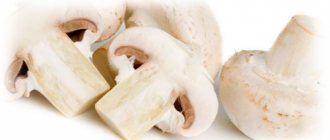Hello, dear interlocutors! Otto Warburg proved that cancer cells do not multiply in a slightly alkaline environment. For this he received the Nobel Prize. His students later confirmed that viruses, bacteria, fungi and parasites behave the same way. I think this fact clearly demonstrates how important it is to take care of your health and nutrition. Almost all “goodies” are sour: soda, juices, pizza, meat products, etc. For this reason, you should know how to check the acid-base balance of the body. Let's figure it out step by step.
Norms
The level of acidity varies between body fluids. What does it mean? The normal pH level for urine is 6.4-6.5, for saliva - 6.8-7.5. The indicators change constantly throughout the day. Fluctuations in urine pH from 6 (in the morning) to 7 (in the evening) are considered acceptable. Gastric juice is more acidic, on an empty stomach - 1.5-2.
The acid-base balance of the blood is more stable. Ideally, its pH does not fall below 7.36 and does not rise above 7.42. A sharp change in blood composition leads to serious consequences! It is not for nothing that in emergency situations, saline solution is administered first.
What happens when the pH level goes beyond safe limits?
pH level measurement
Measurement is possible using special indicators or using a special electronic meter (called a pH meter). However, the most popular measurement method is the litmus indicator.
The principle of operation is as follows: a small amount of water is poured into a disposable cup or a special test tube (sometimes included with the test) and a few drops of the reagent are dripped into it. When interacting with water, a certain color is formed (depending on the pH level of the water). It is quite easy to decipher the results - the kit includes a specially designed colorimetric scale indicating pH values.
Simply compare the color of the test water (or any other liquid) with a colorimetric scale and determine the pH level in the water.
The normal pH for surface water systems is 6.5–8.5, and for underground water systems it is 6–8.5.
Acidification
If the levels drop, problems begin with the absorption of minerals. Potassium, sodium, calcium and magnesium are completely eliminated from the body. Research was conducted at the University of California. It turned out that when bones become acidic, they become brittle. At first, the relationship could not be officially explained. Later, scientists confirmed that due to acid, calcium is poorly absorbed, and our body is forced to use reserve reserves.
What else is going on inside us? Oxygen is transferred to tissues less actively. In the future, this leads to the development of hypoxia - oxygen starvation. Cells stop receiving enough energy. The sources are there, but the oxidation reaction cannot occur. Because of this, weight increases. The disease is accompanied by a constant feeling of weakness and depression. Slowly but surely the internal organs are changing. The cardiovascular system suffers more.
If you ignore what is happening, diabetes becomes the next step. Similar symptoms can occur with hormonal imbalance; we write about how to determine it here. Problems with joints and bones appear. The latter are also covered with abnormal growths. Excess acid accumulates in the muscles, causing pain. An advanced violation of the acid-base balance with a downward shift has its own name - acidosis.
Acid-base balance according to I.P. Neumyvakin
Professor Ivan Pavlovich Neumyvakin dealt with the topics of treatment and human health. He developed recommendations for maintaining the acid-base balance in the body:
- Changing your diet. To maintain the balance of substances in the body, we need to seriously consider what we eat. First of all, it is necessary to limit the consumption of acidic components, such as meat, fish, bread, sweets, and dairy products. Instead, give preference to fruits, vegetables, herbs and other alkaline foods.
- Maintaining water balance. The body requires water to function properly. The daily intake for an adult is about 1.6 liters. It is better to give preference to mineral water, since running water has a low pH level.
- Reducing the amount of medications consumed. This does not mean that you need to abandon the medications prescribed by your doctor for a detected disease. You just shouldn’t engage in constant self-medication and buy unknown medications without medical advice. The professor believes that most of the available medicines are just a marketing ploy by pharmaceutical companies that should not be succumbed to.
- Short-term fasting. A break in food of 2 - 3 days allows you to achieve a good alkalizing effect. The main thing is to drink more water. In this recommendation, you should definitely take into account the condition and capabilities of your body. If you feel unwell, it is enough to limit yourself to one day or completely abandon fasting.
- Consuming unrefined alkaline foods. Neumyvakin believes that it is the peel that contains all the most useful substances.
- Active lifestyle. Exercising significantly improves the functioning of the body and makes you feel more energetic.
- Rejection of bad habits. Drinking alcohol and smoking have never benefited anyone. Pregnant women need to pay special attention to their lifestyle. It is because of harmful addictions that newborns develop various pathologies, including acid-base balance disorders.
Alkalinization
The reverse situation is no less dangerous. The second “name” of alkalization is alkalosis. If with acidosis food is digested too quickly, then with alkalosis it is digested slowly. Food begins to rot, releasing toxins. Correcting such an imbalance is more difficult, but it is also extremely rare. In a special group are patients with ulcers taking medications.
Alkalosis manifests itself as poor appetite and weakness. Sometimes the skin starts to itch. Calcium is deposited in the kidney tubules. In later stages, this can lead to kidney failure. An aversion to dairy products may occur. The picture is complicated by the fact that chronic diseases are getting worse. This takes attention away from the real culprit. Increased susceptibility to allergens. Constipation is often a concern.
The concept of acidity
A way to express the concentration of hydrogen ions in a solution is the pH scale (“pH”) - a hydrogen indicator that expresses the acidity of the medium. They demonstrate the degree of activity of the solution due to the concentration of H + ions in it. The scale is equal in magnitude and opposite in sign to the decimal logarithm of the activity of hydrogen ions, expressed in moles per liter:
pH = –lg
Since the logarithm of the hydrogen ion concentration is a measure of the molar concentration of H+, pH is equal to the exponent times -1. For water, 10-7 mol/l corresponds to a pH value of 7. This neutral point is the balance between H + and OH – on the pH scale. This equilibrium results from the dissociation of water producing equal amounts of H+ and OH–.
Note that since the pH scale is logarithmic, the difference between adjacent scales represents a 10-fold change. Changing the pH level from 4 to 5 will increase the concentration of hydrogen ions by 10 times. In aqueous solutions, the pH value usually takes values from 0 to 14. A neutral environment is characterized by a pH value = 7, in an alkaline environment the pH is greater than 7, in an acidic environment it is less than 7. The more the pH value differs from 7, the more acidic or alkaline the solution is. When [H+] > [OH−] the solution is said to be acidic, and when [OH−] > [H+] the solution is said to be basic.
- Rainwater usually has a slightly acidic reaction (pH=6) due to the dissolution of carbon dioxide in it.
- Rain is considered acidic if its pH is <5.
- Gastric juice is a strongly acidic medium (pH = 1.7).
- Blood pH (7.4).
- Saliva (6.9).
- Tears (7).
How to check the acid-base balance of your body?
Of course, if you suspect that the acid-base balance has been “neglected”, an analysis is simply necessary. Serious symptoms are a reason to consult a doctor. Under normal conditions, you can and should control your condition yourself. It is easier to work with saliva and urine. It is recommended to carry out the test 1 hour before a meal or 2 hours after.
Urine
I already told you about the spread. For this reason, acid-base balance test strips should be used regularly. It is difficult to draw any conclusions based on one test. The result depends on:
- the presence of pathologies of the kidneys and bladder, as well as diseases affecting acidity
- pH level of gastric juice
- metabolism
- time of last meal, food quality
- volume of fluid consumed.
It is logical to assume that with a water shortage, the concentration of substances will in any case be higher. I don't want to scare you, but pH is directly related to kidney stones. When the indicator is below 5.5, urates are formed, from 5.5 to 6 - oxalates, above 7 - phosphates. If the pH is 9, there was an error in the analysis or testing. This often happens when the sample was not stored correctly.
Determining the acid-base balance will give a reliable result if the material was collected no more than 2 hours ago. You should not take diuretics before the test as this will affect the composition. You will have to temporarily give up beets and carrots.
It's easy to test yourself. Simply take a strip, dip it in the liquid you are testing, then look for the appropriate color on the packaging or instructions.
Saliva
How to find out the acid-base balance of saliva? The optimal time is 10-12 hours, on an empty stomach. In the evening and at night, less fluid is released. If there is not enough moisture to measure, you can use a little trick. Do you have lemon at home? Cut a slice and place a saucer with citrus in front of you. You don't need to eat the treat, just watch.
Low pH (less than 6.2) is ideal for pathogen development. The gums become inflamed and swollen, and tooth enamel is destroyed. Cavities form - caries. What is the first thing you usually do if your teeth start to hurt? Rinse with baking soda. In this situation, we can advise the same. You already know about the healing power of soda, I’ll just add that they try to bring the pH of the solution to 7.4-8. There cannot be a single recipe, since the acid-base balance of water in each region is different. You will have to constantly use litmus paper.
Vagina
Stripes will indicate delicate problems. Of course, paper will not replace treatment, but it will give a signal or calm you down. What do the results indicate?
1. 3.8-4.4 is the norm. Microflora is fine.
2. Below 3.8. Indicates inflammation. This may be due to a chronic or venereal disease. Low pH also prevents you from getting pregnant. Spermatozoa die before reaching their goal.
3. About 6. The environment is conditionally neutral. Most likely, there are no pathologies, but urgent restoration of the acid-base balance of the vagina is necessary! The microflora at this pH is simply not able to repel most attacks.
4. Above 7. Usually indicates thrush, colpitis or vaginosis. You should visit a doctor.
Gastric juice
It is almost impossible to check the acid-base balance of the body in this category directly and without procedures. At home, disturbances in the acid-base balance of the stomach are identified by symptoms.
| Signs of elevated pH: | Signs of low pH: |
| heartburn, especially after sour and spicy foods | belching with a putrid odor |
| when thinking about lemons, apples, pickles, etc. there is a copper taste in the mouth | fermentation in the stomach |
| belching | heartburn |
| there is a pulling, aching, dull pain in the stomach, more often in the morning and when hungry | pain near the navel, appears after eating |
| bloating and heaviness | strong gas formation |
| digestive disorders | stool disorders |
| Nausea or stomach pain after taking anti-inflammatory drugs |
As you can see, the manifestations are largely similar, but it is not difficult to notice the deviation. In the latter case, sometimes the skin becomes dry and flaky, nails peel, grow slowly, and hair breaks. Acne may appear.
Leather
The pH value is interesting from a cosmetic point of view. Ideas about the normal acid-base balance of the skin vary, so let's take the widest range - from 4 to 6. I have never seen a wider range. A low pH is characteristic of dry skin, a high pH is characteristic of oily skin. To have an active effect, cosmetics must be aggressive, that is, acidic. Otherwise, it only dries and destroys the natural protective shell. This will not help even with acne, since the activity of the sebaceous glands will increase.
The cosmetic product is applied to the test strip and tested in the same way as any liquid. There are no general recommendations, just determine your individual norm. Next time you will know in advance which cream or shampoo will suit you and which will not. I will only say that the most effective (for example, anti-aging) agents simply must be aggressive. Look for a balance between benefit and harm.
The role of pH in chemistry and biology[ | ]
The acidity of the environment is important for many chemical processes, and the possibility or outcome of a particular reaction often depends on the pH of the environment. To maintain a certain pH value in the reaction system during laboratory research or in production, buffer solutions are used, which allow maintaining an almost constant pH value when diluted or when small amounts of acid or alkali are added to the solution.
The pH value is widely used to characterize the acid-base properties of various biological media.
The acidity of the reaction medium is of particular importance for biochemical reactions occurring in living systems. The concentration of hydrogen ions in a solution often affects the physicochemical properties and biological activity of proteins and nucleic acids, therefore, for the normal functioning of the body, maintaining acid-base homeostasis is a task of exceptional importance. Dynamic maintenance of the optimal pH of biological fluids is achieved through the action of the body's buffer systems.
In the human body, the pH value is different in different organs. Normal blood pH is 7.36, that is, the blood has a weakly basic reaction (with fluctuations from 7.34 in venous blood to 7.40 in arterial blood). Depending on the biochemical changes in the blood, acidosis (increased acidity) or alkalosis (increased basicity) may be observed, however, the range of blood pH compatible with life is small, since even with a decrease in pH to 6.95, loss of consciousness occurs, and a shift in the blood reaction to the alkaline side up to pH = 7.7 causes severe convulsions. Maintaining the acid-base balance of the blood within acceptable limits is carried out by blood buffer systems, the main one of which is hemoglobin [3]. The normal pH of gastric juice (in the lumen of the body of the stomach on an empty stomach) is 1.5...2.0 [4]. The pH of small intestinal juice is normally 7.2...7.5, and with increased secretion it reaches 8.6 [5]. The pH of the contents of the large intestine can normally vary from 6.0 to 7.2 units and depends primarily on the level of fatty acid production by its microbiota[6].









